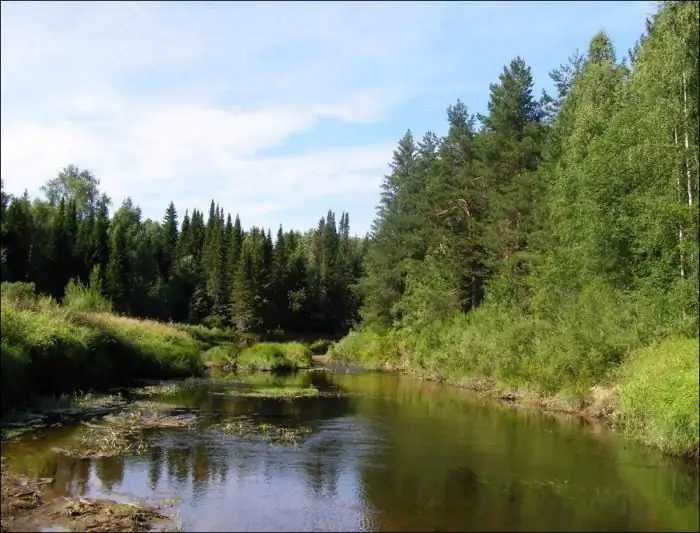- Author Harold Hamphrey [email protected].
- Public 2023-12-17 10:06.
- Last modified 2025-01-24 11:10.
Nature in the 21st century needs protection and protection, especially within large metropolitan areas. How many natural objects and territories are protected within the Russian capital? Which parks and reserves in Moscow are worth visiting first of all? This will be discussed in this article.
National parks and reserves of Moscow
Nature must be protected. It is for these purposes that national parks, reserves, landscape reserves and natural monuments are being created.
A national park means a special area with limited human activities. However, tourists are allowed in. But in the reserves, any human activity is prohibited, including hunting, fishing, picking berries or tourism.
The oldest national park in the world is Yellowstone, which was established in 1872. But the largest on the planet can be called the Northeast Greenland Park, the area of \u200b\u200bwhich exceeds the size of such European states as Germany, Ukraine or France.
Which national reserves in Moscow should be visited first?
In the capital of Russiatoday there are 119 specially protected natural areas (SPNA in short). Reserves of Moscow are often popular vacation spots for residents of the city and the Moscow region. The largest of them is the park "Elk Island".
Parks and reserves of Moscow: Losiny Ostrov
This is the first largest national forest park within Moscow. Its total area reaches 116 square kilometers. The lands of the forest park were popular with Russian tsars and princes as early as the 15th-18th centuries. It is known that even Ivan the Terrible went to this park for a bear hunt.

Sergey Dyakov in 1912 came up with the idea of creating a forest park, since 80% of this territory was occupied by coniferous and birch forests. In the "green belt" surrounding Moscow, Losiny Ostrov was included already in 1934. This reserve is famous not only for fresh air and real Russian nature, but also for the amazing opportunity to photograph live deer or elk in their natural habitat. The fauna of this park is striking in its diversity. Here you can admire not only elk and deer, but also see wild boars, minks, squirrels, muskrats and beavers. Any person will instantly forget about the noisy metropolis, being in the territory of a beautiful corner of nature.
Izmailovsky Park
Moscow's parks and reserves are excellent facilities for recreation and eco-tourism. One of these is Izmailovsky Park. It consists of two parts. The first is densely planted thickets of the forest park, the second is a cheerful park with a Ferris wheel,shooting range, attractions and even a race track. There are places to walk, dance, play tennis or street chess.

Having rented sports equipment, you can spend time in the Panda Park cable car or on the climbing wall. In summer, you can take a boat or catamaran ride around the island where the town named after Bauman is located, admire the views of the Serebryano-Vinogradny Pond or the Intercession Cathedral built in the 17th century, or the Izmailovsky Almshouse of 1839, which are still preserved in this town.
The history of Izmailovsky Park began in 1930. Later it was renamed the Stalin Recreation Park, but the monument to V. I. Lenin to this day occupies the central platform. In 1956, after debunking the cult of personality, he again became Izmailovsky.
Bitsevsky forest
This natural park is located in the southern part of Moscow. Its area is more than two thousand hectares. It ranks second in size among the green areas of the capital.

Initially, this forest was chosen by the Finno-Ugric peoples, and in the 11th century they were replaced by the Vyatichi. Thanks to the latter, we can see mounds here that are more than a thousand years old. There are other equally famous objects here, such as Boundary Pillars. In 1909, in honor of Stolypin's reforms, they were installed in this forest. The forest is famous for its ancient mansions. Among them are Yasenevo, Znamenskoye-Sadki and Uzkoye. People constantly come to the local spring. The glory of healing water,with a unique taste, known far beyond Moscow.
Reserve "Vorobyovy Gory"
The reserve in the south-west of Moscow is located above the cliff. This is the most beautiful place from which the most amazing panorama of Moscow opens. The steep slope is dotted with the deepest ravines and constant landslides. The territory of the park is famous for its three ponds and broad-leaved forest, the flora of which is rich and varied. Anyone can walk along three ecological trails or admire the plants that are listed in the Moscow Red Book.
The forest is predominantly maple, but there are also oaks, birches, lindens and ash trees.
Voices Ravine
This famous ravine originates from the Moskva River and has a fairly long length. It is located in the Kolomenskoye nature reserve. There are still legends about this ravine, allegedly confirmed by documents from the archives.

Back in 1832, a note about two missing peasants was published in Moskovskie Vedomosti. Presumably, they went from the village of Dyakovo to Sadovniki. Their path ran through Kolomenskoye. All this happened even before the war with Napoleon. Once in an unusual green fog, they sat down to rest on the famous Devin stone, and disappeared for 21 years.
In conclusion…
119 Today there are protected areas within Moscow. These are national parks, nature reserves and sanctuaries.
Moscow reserves are not only a great place for ecological tourism, but alsoreservation to preserve the natural landscapes of the capital.






